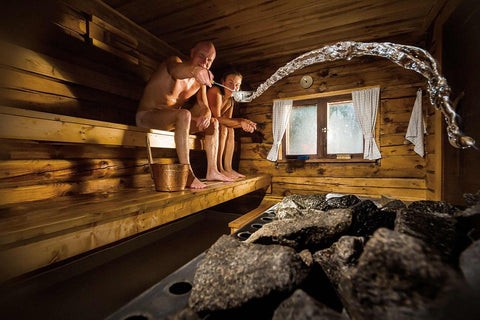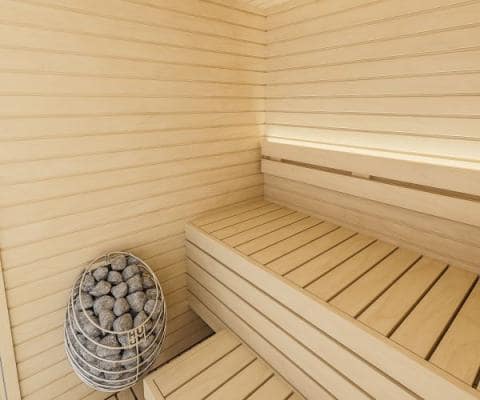Facts About Traditional Sauna Uncovered
Facts About Traditional Sauna Uncovered
Blog Article
The Definitive Guide to Traditional Sauna
Table of ContentsNot known Facts About Traditional SaunaMore About Traditional SaunaThe Single Strategy To Use For Traditional SaunaTraditional Sauna Things To Know Before You Buy
Many of the weight shed in a sauna is water loss and is re-gained upon rehydrating. Without a question sauna can be a crucial component of a healthy weight loss program. To take a look at the differences in between typical and IR saunas, I will certainly separate these into proven, theoretical, and fabricated distinctions.Thus, the hottest factor in the saunawhich goes to the ceiling straight above the sauna heateris generally between 185 and 190 F. Traditional Sauna. Claims that a conventional sauna goes beyond 200 F is just not true and not relevant for electric saunas sold in the United States. The temperature level for a far-infrared sauna is generally set between 120 and 140 F; nonetheless, unlike the conventional sauna, the objective in and IR room is not to attain a high temperature level
As a result of this, the temperature level difference is almost unimportant, considering that profuse sweating leads to both sauna kinds, however the technique of heating the body is various. In an IR sauna the bather will certainly feel warm and will sweat profusely, however at a lot reduced temperature levels. Therefore, if the goal is to spend longer time periods in the sauna, the IR sauna is an excellent choice.

The 9-Minute Rule for Traditional Sauna
When the heat is achieved, the aspects cycle on and off to keep the high temperature level. A lot of typical sauna users delight in pouring water over the rocks to produce heavy steam to raise sauna humidity degrees. The benefits of pouring water over the rocks consist of: making the room more comfy, moistening the nasal flows, and enabling the use of aromatherapy by blending necessary oils with the water.
In a far-infrared sauna, the heat waves penetrate the body to successfully heat up the body and raise the body core temperature level. To attain this increased temperature level, Far-infrared emitters create infrared energy which is close to the same wavelength as that which the body normally emitsoften referred to as the "Important Variety" of 7 to 14 microns), so the energy is well received by the body.
When the power enters the body, it creates the body temperature level to raise and eventually causes sweating. In an infrared sauna it is very important for the emitters/heaters to stay on nearly continuously. Since there is no mass of rocks to keep heat, the sauna will certainly cool if the emitters turned off.
As stated above, the sauna bather in an infrared area intends to position himself before operating emitters to get optimal advantage from the heat. The heating time for the two areas can be really different, depending upon just how the spaces are used. For a typical sauna, a bather should allow 30-40 mins for the area to achieve a wanted temperature and to correctly pre-heat the rocks.
Traditional Sauna for Dummies
A well built sauna will commonly achieve a temperature of 150-160 F in concerning 30-40 minutes (Traditional Sauna). For hotter temperature levels, the area might need to warm for a longer duration. visit our website As soon as the dig this space achieves established temperature, the heating unit will certainly cycle on and off, commonly operating concerning 50% of the time. The shielded walls and the warmed rocks will maintain the room hot and at steady temperature levels.
To some, 15 mins was "lost" while the infrared energy heated the wood panels as opposed to warming a body, while others discover a pre-heated space to be extra comfy and think a raised beginning temperature level is needed to start sweating. The size of recommended use for every area is about the same (10-15 mins per session); nonetheless, because of the reduced air temperature levels and the capacity to feel the impacts of infrared heat much faster than a typical sauna, it is not uncommon for a person to invest a total of 20-30 mins in an infrared sauna.
Conventional saunas have a tendency to be bigger (therefore utilize more electricity) than infrared saunas, although typical saunas are absolutely offered in one and 2 individual dimensions too. For a two-person typical sauna, 5x6 or 5x7 size is most popular. The top bench can pleasantly seat 2 or three people and is additionally long enough to lie down throughout the sauna session.


The average price per kWH of electricity in the united state is approximately $0.11, so a 4.5 kW heater will set you back approximately $.50 to run for one hour, if the heating unit runs continuously for one hour. Typically a sauna heating unit will compete 75% of the first hour and 50% of subsequent hours on because the aspects cycle once the established temperature is achieved.
Not known Incorrect Statements About Traditional Sauna
A two person far-infrared area is normally literally smaller sized than a conventional sauna, frequently about 4' x 4' or smaller. The IR heater is generally 1.5-1.7 kW using a 120 volt 15 amp plug-in service. Because the room can be made use of earlier than a sauna area, we will certainly presume the room is utilized for to of an hour including heat up time.
Ultimately, there click is a rarely reviewed distinction in the social experience between both spaces. While our society has shed some of the social advantage of the conventional sauna experience, it can be very socially fulfilling. From family members time in the sauna, to heart-felt conversations with considerable others, to sauna partiesthe typical sauna experience can cause intimate socializing.
Many greater end infrared rooms consist of tinted light treatment, noise systems and full-glass fronts.
Report this page